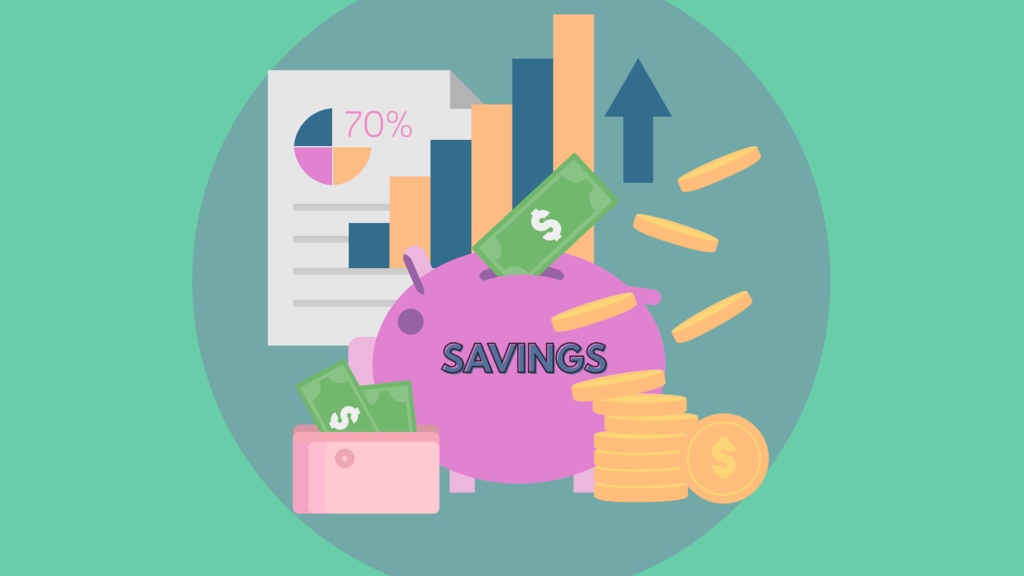High-Yield Savings Accounts: Is the Extra Interest Really Worth It?
In today’s competitive financial environment, maximizing your returns on savings is more important than ever. One option that has gained popularity among savvy savers is the high-yield savings account. With interest rates far above those of traditional savings accounts, these accounts are often touted as a smart way to grow your emergency fund or short-term savings.

But is the extra interest really worth it? In this article, we’ll explore the benefits and potential drawbacks of high-yield savings accounts, review real data on current rates, and provide a step-by-step guide to help you decide if switching is right for you. We’ll also discuss some of the best high-yield savings accounts available today.
What Are High-Yield Savings Accounts?
A high-yield savings account is similar to a traditional savings account but typically offers much higher annual percentage yields (APYs). These accounts are often provided by online banks or credit unions that have lower overhead costs, allowing them to pass on more attractive interest rates to customers.
Acording to Bankrate, on March 2025, many of the best high-yield savings accounts are offering APYs between 3.50% and 4.50%—a stark contrast to the roughly 0.45% APY offered by many conventional savings accounts.
Benefits of High-Yield Savings Accounts
Enhanced Interest Earnings
The most obvious advantage of high-yield savings accounts is the significantly higher interest earned on your balance. Over time, even a small difference in APY can lead to considerably more growth due to the power of compound interest.
For example, if you have $10,000 in a traditional savings account at 0.45% APY, you’d earn around $45 in interest per year. In contrast, at 4.00% APY, that same balance could yield approximately $400 annually. This extra interest can accelerate your savings goals considerably.
Safety and Liquidity
High-yield savings accounts are typically FDIC- or NCUA-insured up to $250,000, which means your funds are protected even if the bank experiences financial difficulties. Moreover, these accounts offer the liquidity you need for an emergency fund—money you can access quickly when unexpected expenses arise.
Ease of Use
Many online banks provide user-friendly mobile apps and online dashboards, making it easy to track your balance, set up automatic transfers, and monitor your progress. This convenience is an attractive feature for busy individuals who want a straightforward way to manage their finances.
Considerations and Potential Drawbacks
Variable Interest Rates
One important factor to consider is that the APY on high-yield savings accounts is variable and can change with market conditions. If the Federal Reserve adjusts interest rates, your APY might decrease, which can slow your savings growth. Staying informed about economic trends is essential if you rely on these accounts for significant long-term growth.
Withdrawal Restrictions
Federal regulations limit certain types of withdrawals from savings accounts (typically six per month), which might not be an issue for emergency funds but can be a drawback if you need frequent access to your money. Additionally, some banks may impose fees if you exceed these limits.
Minimum Balance Requirements and Fees
While many high-yield savings accounts boast no minimum balance requirements, some might charge maintenance fees if you fall below a certain threshold. Always read the fine print before opening an account to ensure it aligns with your financial habits.
Are High-Yield Savings Accounts Worth It?
For those who value safety, liquidity, and a modest return on their savings, high-yield savings accounts are a strong choice—especially compared to traditional savings accounts. They’re particularly useful as a component of a broader financial strategy that includes paying off debt, investing for retirement, and building an emergency fund.
Ultimately, the decision comes down to your personal financial goals. If you’re looking for a low-risk way to earn a better return on your cash without locking your money into long-term investments, then the extra interest offered by it is definitely worth considering.
Conclusion
High-yield savings accounts offer a compelling alternative to traditional savings options, with significantly higher APYs, safety through FDIC or NCUA insurance, and ease of access.
By understanding the benefits and potential limitations—such as variable rates and withdrawal restrictions—you can decide if these accounts fit your financial goals. For those looking to optimize every dollar while maintaining flexibility, high-yield savings accounts can be an essential tool in your financial toolkit.
For more insights on personal finance and investments, check out these related articles:
- 👉Index Funds vs ETFs: Which Is Best for Your Investment Strategy?
- 👉The 50/30/20 Budget: Why Financial Experts Love This Simple Formula
- 👉Retire Early: How the FIRE Movement Is Transforming American Personal Finance
FAQ
Q: What exactly is a high-yield savings account?
A: A high-yield savings account is a type of savings account that offers a significantly higher APY compared to traditional savings accounts. These accounts are usually offered by online banks or credit unions and provide better returns while remaining FDIC- or NCUA-insured.
Q: Are high-yield savings accounts safe?
A: Yes, most high-yield savings accounts are insured by the FDIC or NCUA up to $250,000 per depositor, making them a safe option for your savings.
Q: Can the interest rate on a high-yield savings account change?
A: Absolutely. The APY on these accounts is variable, meaning it can change based on market conditions and economic policies set by the Federal Reserve.
Q: Are there any fees or withdrawal limits associated with these accounts?
A: Some high-yield savings accounts may have withdrawal limitations (typically six transactions per month) and could charge fees if you exceed these limits or fall below a minimum balance requirement. Always review the account details before opening.
Q: How do I choose the best high-yield savings account?
A: Look for accounts with the highest APYs, no or low fees, easy access, and strong customer reviews. Websites like Bankrate and NerdWallet offer updated comparisons and detailed reviews to help you choose.




Your style is so unique compared to many other people. Thank you for publishing when you have the opportunity,Guess I will just make this bookmarked.2